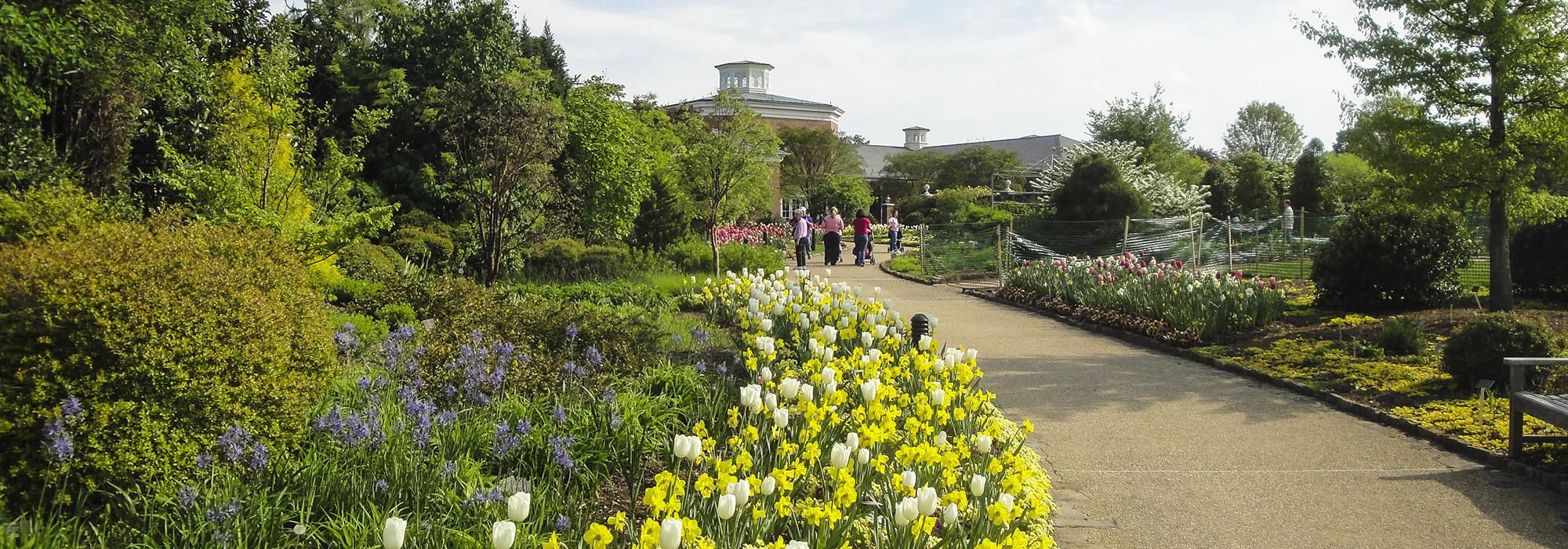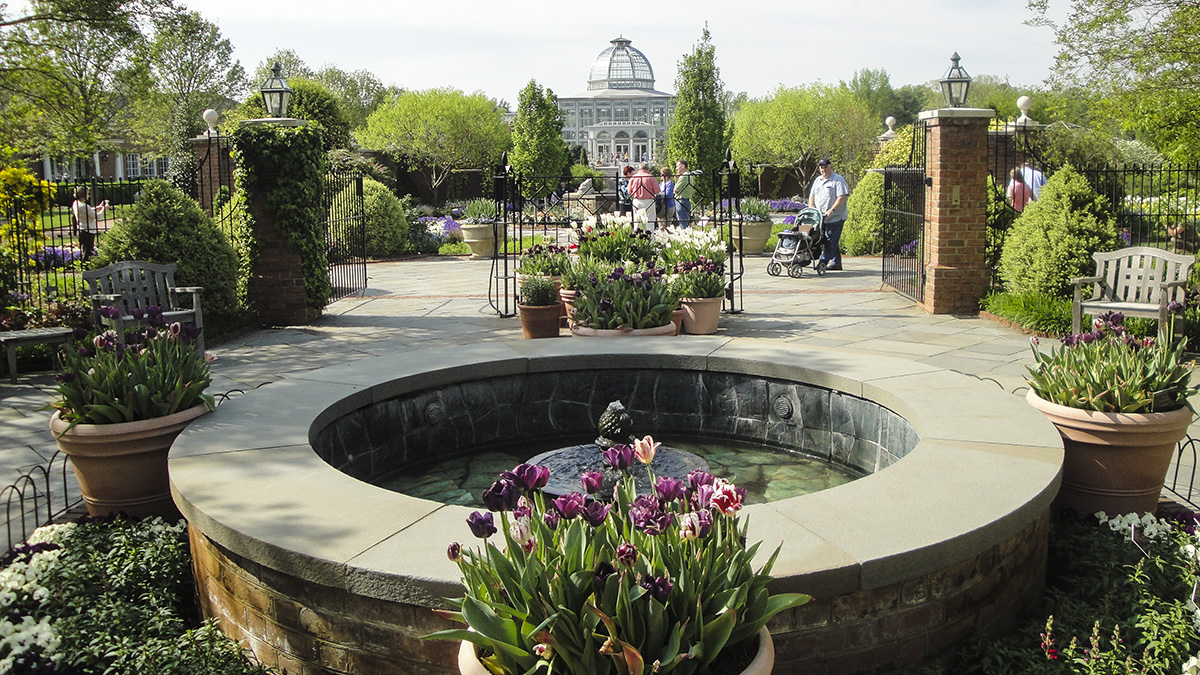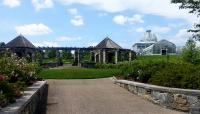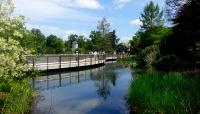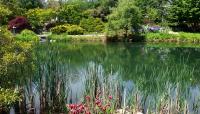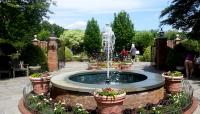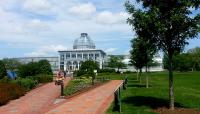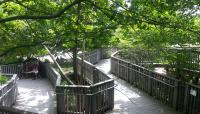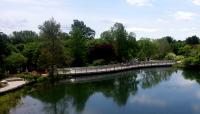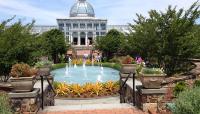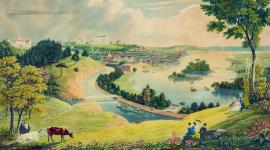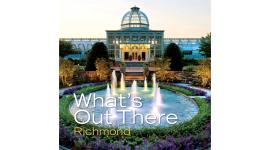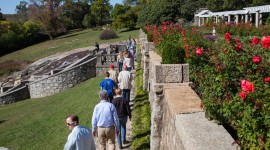This 80-acre research institution and public garden was established in 1984 by a group of botanists, horticulturists, and citizens upholding the will of Grace Arents, niece of Richmond philanthropist Lewis Ginter. Working from the existing landscape developed by Ginter and Arents, a master plan was produced in 1987 by Environmental Planning & Design and Marcellus, Wright, Cox & Smith. Rodney Robinson Landscape Architects and Higgens and Associates updated the plan in 1995 and an array of designers and horticulturists have contributed to the garden’s phased expansion.
A curvilinear entrance drive circumnavigates an expansive lawn to provide access to the Georgian-style Robins Visitors Center, opened in 1999. The visitor center fronts the Central Garden, an unfolding progression of garden rooms bordered by the Education and Library Complex and the 60-foot-high domed Conservatory housing tropical and seasonal plants. The Central Garden’s eastern edge opens to the Asian Valley with delicately-pruned trees and rock gardens leading to a terraced lawn adjacent to Sydnor Lake. A lakeshore path leads visitors through themed gardens and meadow, wetland, and woodland environments. The 140-foot long serpentine Lotus Bridge carries visitors from the expansive 9,000-square foot Rose Garden to the interactive Children’s Garden. Across the lake lie the 1884 Bloemendaal House and the Grace Arents Garden, restored to its Victorian appearance by the Garden Club of Virginia in 1989. In 2009, Nelson Byrd Woltz produced a hydraulic master plan for the garden that conserves and cleans water while also serving as a demonstration of natural systems. Dedicated to public education, Lewis Ginter Botanical Garden hosts various workshops and symposia.



